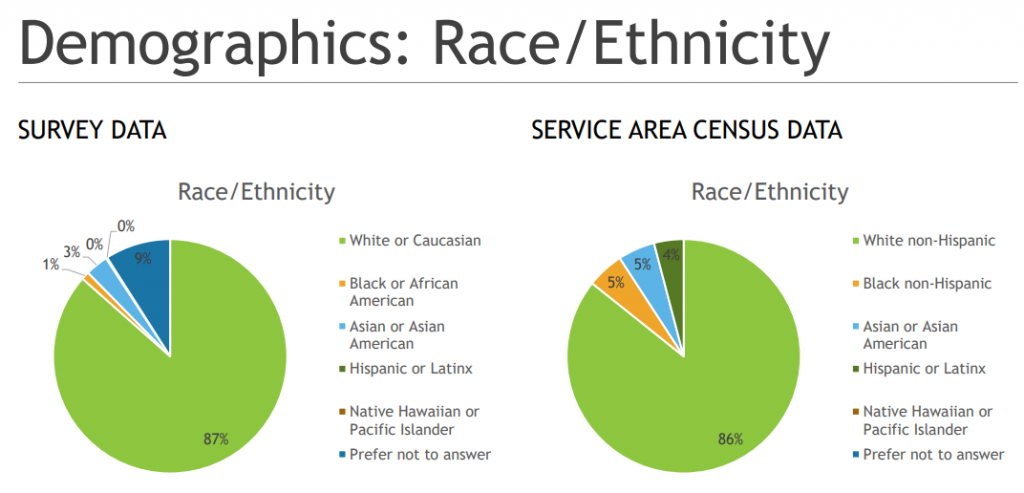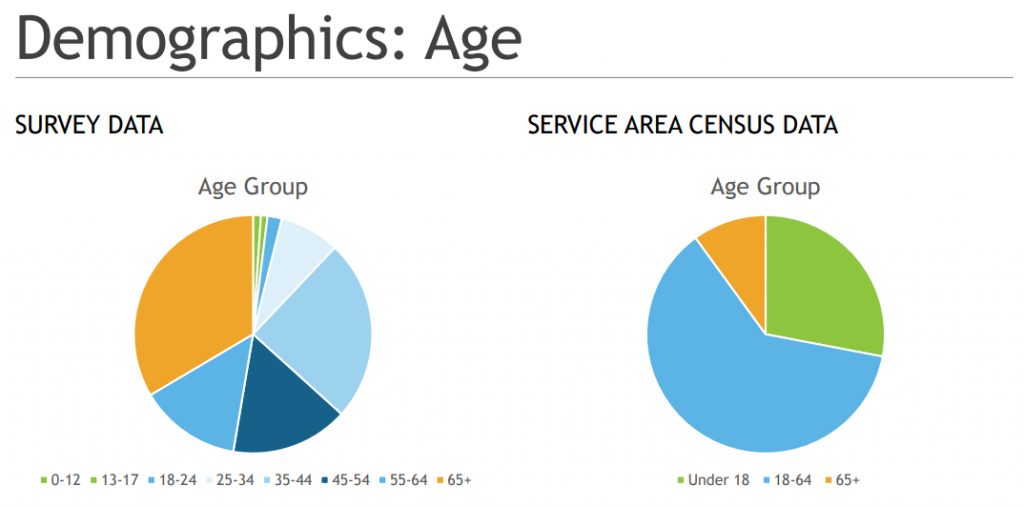Each year since 2019, the Hamilton East Public Library (HEPL) does a survey to see what those that use the library think of the services. HEPL includes the public libraries in both Fishers and Noblesville. Following are some of the slides that were presented at the January 23rd, 2023 library board meeting along with some of my notes regarding what was presented.
The library administered the survey from November 7th to November 20th, 2022 using SurveyMonkey. It was advertised on social media, in their newsletter, on checkout machines, and on signs and bookmarks at the libraries. There was a paper version of the survey available as well. There were a total of 634 responses, which is the highest feedback they’ve had on the surveys. As a note, there are around 90,000 card holders at the library. In 2021 only 164 people filled out the survey. In 2020 the number was 463.
Of those that filled out the survey, most (more than half) were from Fishers, with the rest being from Fishers and a portion being from zip codes outside of both cities. Most indicated that the Fishers branch was their primary library.

When asked about customer service at the library, the rating was a 3.8 out of 4, which is up from the past two years. (2019 used a different scale). This was true across all three main areas:
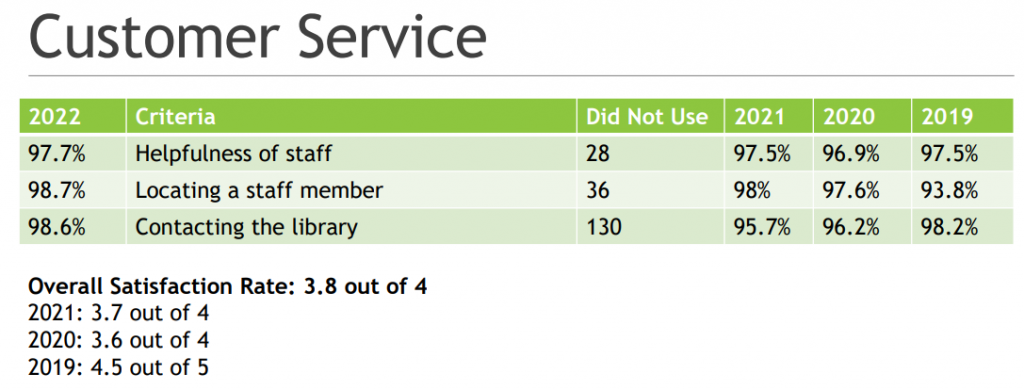
While specific comments were not provided, The library staff did share the positive versus negative ratios of comments received on customer service and other areas. With customer service, the comments were predominantly positive. There were areas where there were negative comments with “Spaces and Facilities” having the highest negative comments. It was noted — and if you’ve been to the libraries this past year you know this — that there is construction happening.
Related to construction, another area of the survey was on Interior Spaces. Even with construction, the ratings were again very good:
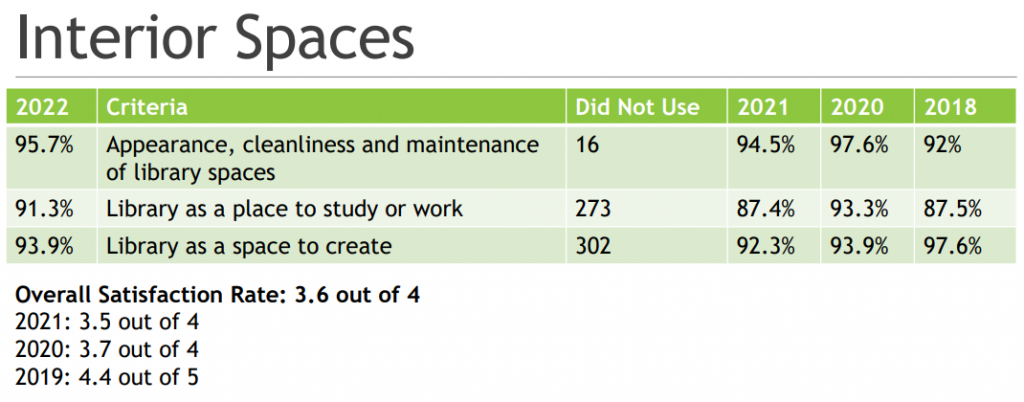
Clearly with renovation happening, the libraries are not presenting the interior spaces at their best. This was reflected in the comments.
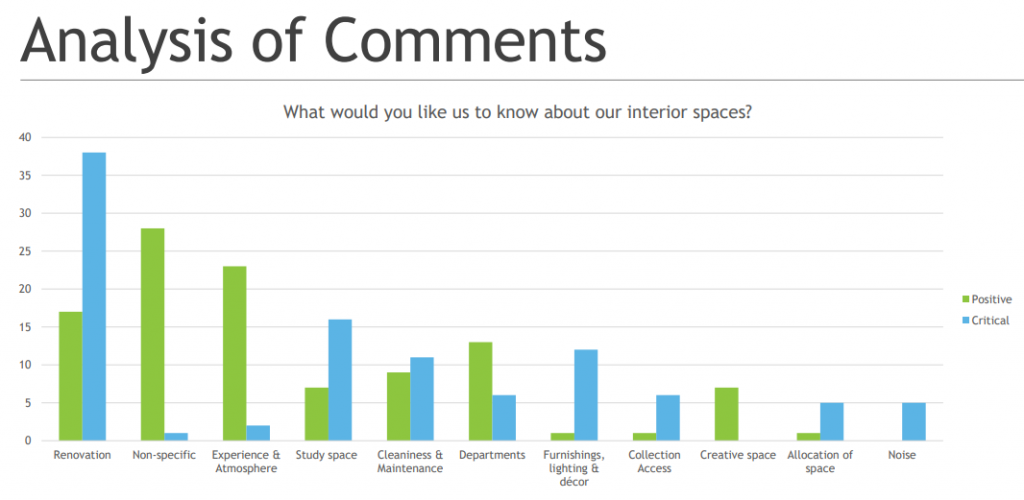
Again, the specific comments were not provided; however, it was noted that some of the feedback included the need for more workspaces. There was feedback on the library being a place to study or work but there is a limited number of places to study. There has also been a bit of noise, but our libraries are naturally busy plus there is construction. There are 10 to 12 study room. It was noted that different people have different opinions of what study rooms are. Some think they are places to go have conversations. The study rooms, however, are not soundproof.
Of course, a library is about the collections or items that are made available to the public. This is an area where the numbers went down a little bit:
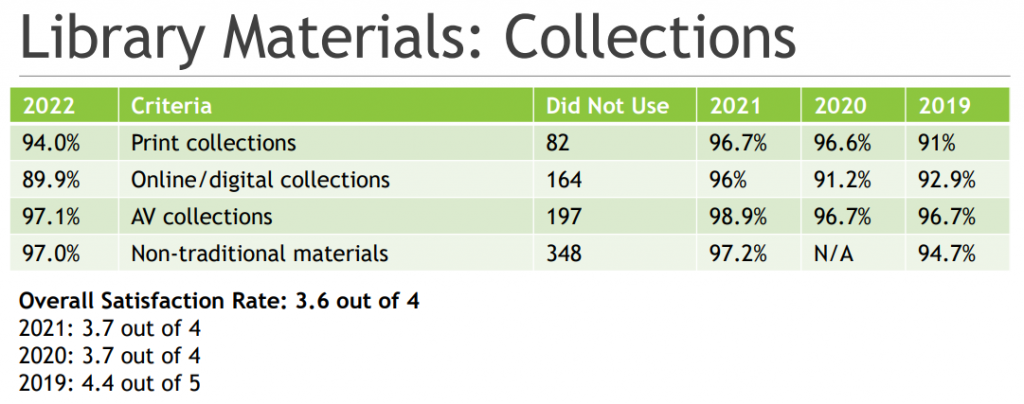
Even having gone down in the scores, the ratings are still very strong. The online digital area was where the biggest drop was seen. It was noted that just like the printed books, not every book is available digitally as well.
Related to collections is access to the materials. There were a number of questions related to access including ease of locating materials, the check-out process, doing holds, managing online accounts, requesting items, and curbside pickup:
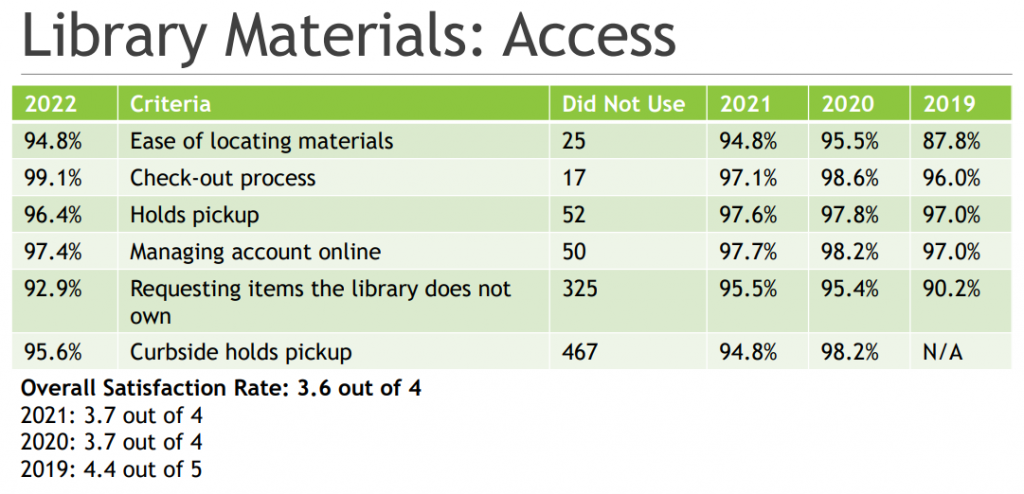
With a rating of over 99%, it was clear that changes to the checkout process this past year were very favorable. For those that have used the self-checkouts, they are pretty easy to use, and it is nice that you can simply scan your card and then set your items down and it reads them all. It’s very quick and easy. The comments related to access included a balance of negative to positive:
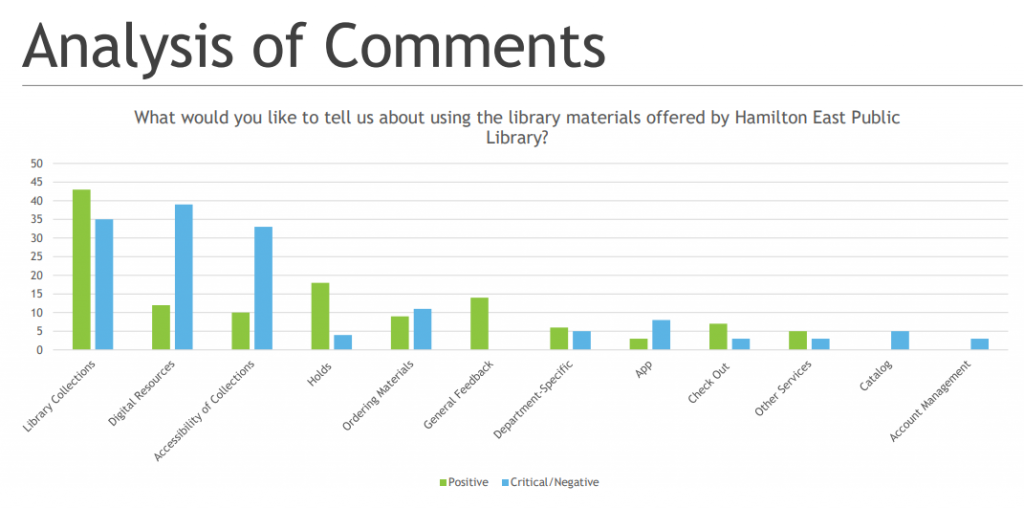
A desire for more content was the primary issue. Access was the lowest rated area in the survey. It seemed that people are frustrated with having to wait for items on hold. This includes having to wait for ebooks. Just like hardbound books, the library has to order copies of ebooks. The library licenses a set number of licenses to use with many books. While the President of the library board might not understand how ebook checkout works, in general it works just like regular books, which includes a limited time for having the book before it needs to be “returned”.
In discussing the survey, it was mentioned that once the library licensed an ebook, the license (book) can’t return to get credit to license something else. It was also asked if the library could use Amazon kindle for books. The response was that Amazon doesn’t sell to libraries. If I heard correctly, in some cases, the way ebooks work is that the library pays for the downloads that happen.
It was stated by a board member that publishers were overpricing ebooks. I believe it was indicated that the fee for libraries is higher than that of a regular book buyer. It was stated that publishers believe libraries are taking away sales, thus the reason for increased price.
The next area of the survey results focused on technology:
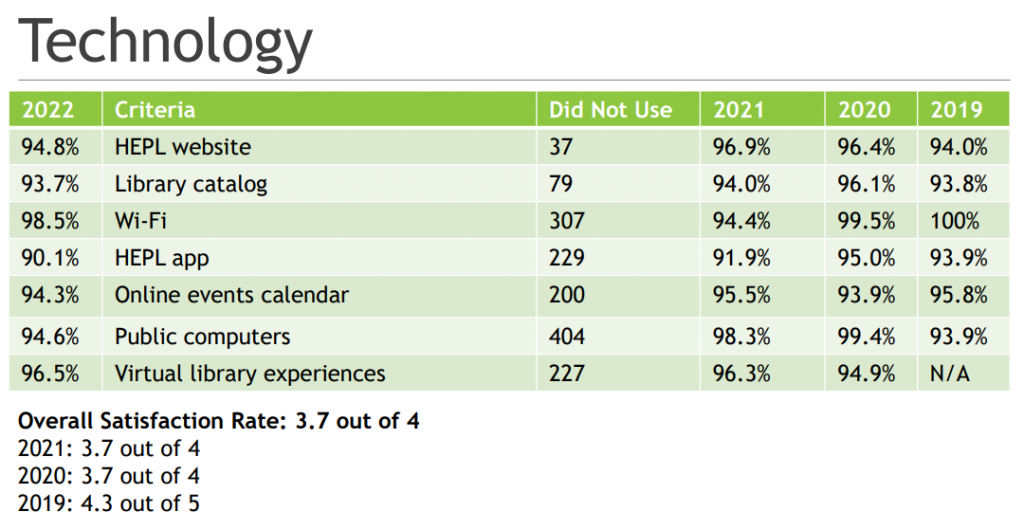
It was noted that the app received the lowest feedback. The library staff indicated that the app was now several years old and that getting updates was a slow process due to who they were working with. A couple of board member made comments about focusing only on iPhone, however, it was hard to tell if they were serious or joking. I’ll assume they were joking. There was also a lot of discussion by the library board around making sure the update to the website and/or app used a responsive design, although they didn’t use that term and didn’t to understand that is pretty much standard practice for web sites at this point in time.
In looking at the technology comment feedback, there were again a number of critical comments:
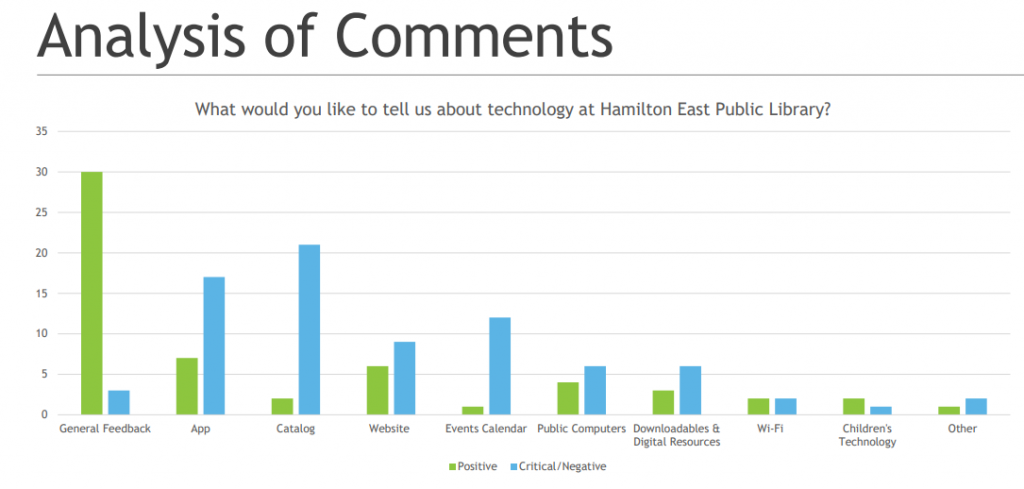
There was a discussion during the survey coverage about the catalog and searching. It was stated that the search used by the library to find books is structured differently than what you find in a search engine like Google. This means that results are given differently than you’d get from a Google search. This combined with the mixture of media – such as ebooks being returned in addition to hardcopies seemed to frustrate some people.
On things like event calendars, there is the issue of events filling up as well as time slots for events. The library staff indicated that when things fill quickly or there is a big wait list, they do look to see if it is possible to offer other sessions and schedule accordingly. It was noted, however, that this doesn’t always work. For example, 10:00am is the most popular slot for Storytime and it fills quickly. Adding Storytime slots during at other times get the same demand. The 10:00am slot is simply the prime time.
Moving beyond technology, the survey asked about some of the other program areas in the library including the programs, Ignite Studio, and the Indiana room:

When stepping back and asking about some of the most common experiences such as asking library staff for help, or simply visiting the library, the overall fedback was up for the most part year-over-year:
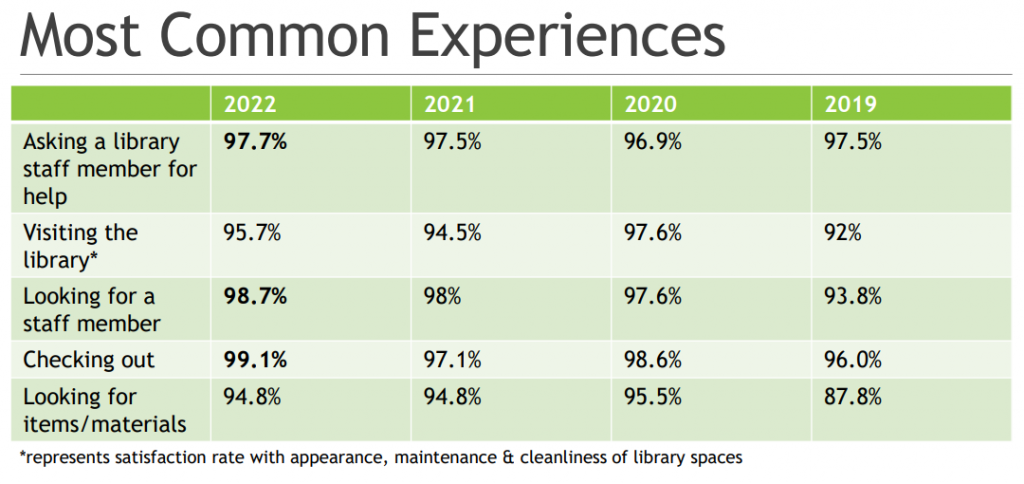
With some of the less common areas of use int he library, numbers in a lot of cases were down:
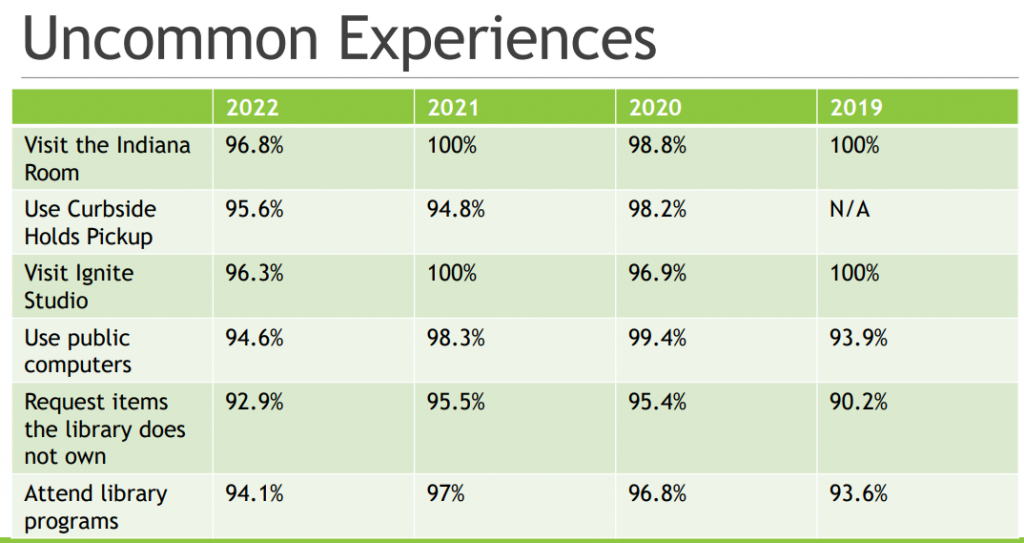
The construction is likely having some impact on these less common areas. But even with the numbers being down in several of them, the numbers are still very high scores.
The overall takeaways that the library staff noted started by stating that customer service is seen as excellent. Additionally, there are high levels of satisfaction with the core services and experiences that the library offers. Even so, there is room for improvement in areas such as supporting study and work areas. The online and digital collection could be improved as well as the HEPL app and catalog. With much of the major construct expected to be done in the relatively near future, some of this will be easier to address. If the library staff doesn’t get distracted identifying and moving 8,000 books the library board is concerned with, then next year’s ratings will hopefully be as great or better than this years!
Before ending this post, I’ll add two other slides that were provided. One on the age of those that answered the survey and the other on ethnicity. These charts would have been more interesting if they included the same demographics for the members of the libraries; however, that information is not available.
